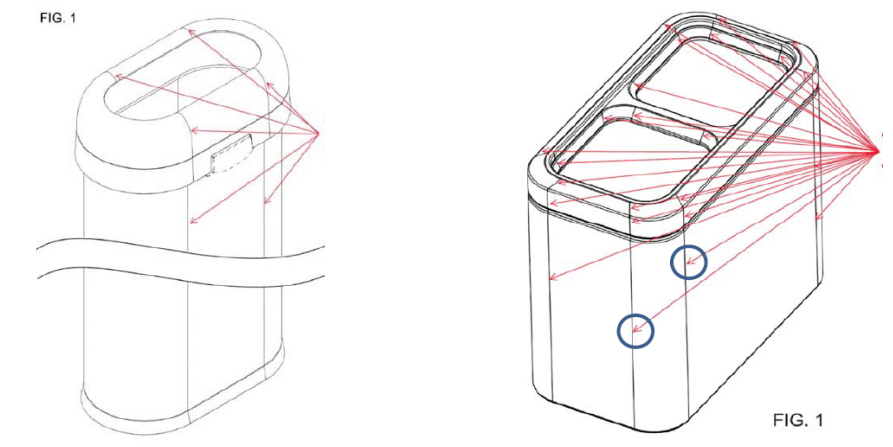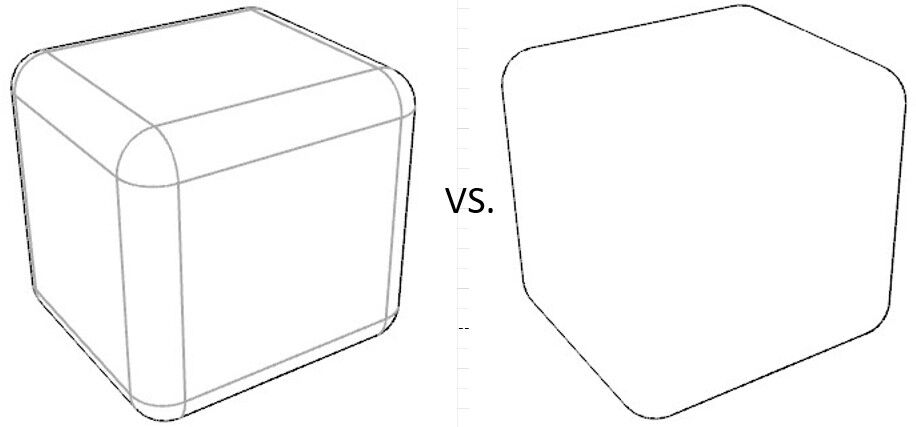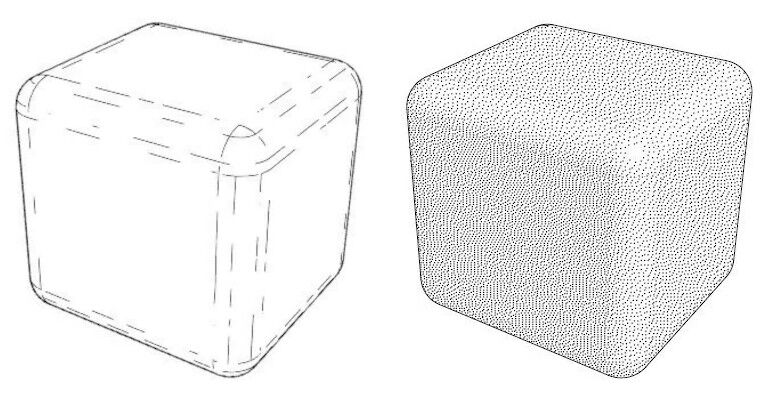
Design Patent Case Study: The Risks of Tangent Lines
A Line of Caution: Ensuring Design Patent Integrity
Tangent lines, commonly utilized in engineering drawings to depict three-dimensional features, can inadvertently jeopardize the integrity of design patents. These lines, while illustrative in technical drawings, may not translate effectively into the world of design patents, where clarity and unambiguity are paramount. This discussion sheds light on the complications tangent lines may introduce to design patents and introduces proven solutions to mitigate these risks.
The Tangent Line Dilemma
In the realm of design patents, tangent lines often blur the lines between mere illustrative tools and perceived ornamental elements, casting a shadow of ambiguity over the patent’s scope. A notable instance, the Simplehuman, LLC vs. iTouchless Housewares and Products Inc. case, illustrates how courts can interpret these lines as integral, ornamental features of a design, complicating the patent’s interpretation.

Navigating the Challenges
The choice of software in creating 3D models—whether parametric 3D CAD or 3D Mesh Modeling—greatly influences the appearance of tangent lines in the resulting 2D drawings. This inconsistency can breed confusion and legal hurdles, underlining the necessity for uniformity and precision in patent illustrations.

Innovative Solutions for Clarity
To circumvent the pitfalls associated with tangent lines and enhance the clarity and legality of design patents, consider these alternatives:
- Line Shading: This technique offers a differentiated visual between surfaces, enhancing clarity but with limitations.
- Stipple Shading: An optimal choice for design patents, stipple shading excels in depicting three-dimensional aspects without reliance on potentially ambiguous lines. It aligns seamlessly with legal standards, ensuring clearer, more definitive patent illustrations.

Conclusion: Advancing Patent Illustration
The challenges posed by tangent lines underscore the crucial need for innovation in patent illustration techniques. By integrating advanced methods like stipple shading, patent applicants can secure the clarity and legal robustness of their design patents, ensuring their innovations are protected with precision. Embrace the future of design patent illustration with STIPPLES—where clarity meets innovation.
Recommended Webinars
Delve deeper into the topics discussed in this article by attending our webinars. These sessions provide further insights and offer the chance to interact with experts in design patent drafting and illustration.
- Design Webinars: Avoiding Non-Correctable Errors in Design Patents:: Discover how to avoid non-correctable errors in design patents and ensure the success of your applications in this informative webinar by IP DaVinci.
- Design Webinars: Handling Advanced Scenarios in Design Patents: Explore strategies for handling advanced scenarios in design patents in this insightful webinar by IP DaVinci, enhancing your ability to navigate complex cases.
- Design Webinars: Cost and Time Saving Tips for Design Patent Drawings: Learn cost and time-saving tips for design patent drawings in this practical webinar by IP DaVinci, aimed at streamlining your patent application process.
Provide Feedback
We value your feedback! Let us know how we can improve or what topics you’d like to see next.
Connect with Mike
Have questions or need support? Connect with Mike for personalized assistance.
Share Your Experience
Found our series helpful? Share it with your network and help others benefit too!